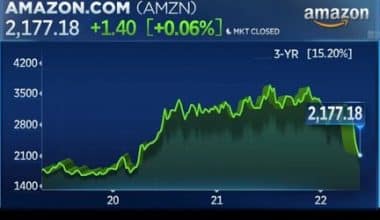Pump and dump refer to the practice of artificially inflating a company’s share price and then exiting the market with a huge profit before the price falls. It is an illegal and unethical practice, and offenders are frequently punished by the Securities and Exchange Commission (SEC). Numerous laws allow authorities to charge a perpetrator. This guide defines a pump-and-dump scheme, explains how it operates, and discusses the effects it has on the stock market and the crypto space. Additionally, it provides advice on how to spot and avoid pump and dump activity.
What is Pump-and-Dump?
Pump-and-dump is a deceptive scheme in which the price of a stock or security is raised by making false recommendations. These recommendations are based on statements that are false, misleading, or greatly exaggerated. A pump-and-dump scheme’s perpetrators already have a position in the company’s stock and will sell after the hype has caused the share price to rise.
According to securities law, this practice is illegal and can result in large fines. The exploding popularity of cryptocurrencies has led to the proliferation of the scheme.
How Does the Pump and Dump Scheme Work?
Manipulating microcap stocks is a common part of the scheme (penny stocks). They are stocks of companies with a small market capitalization. Microcap stocks are typically traded over the counter (OTC) for very low prices (less than $1 or equivalent). They do not follow strict public listing requirements.
As a result, fraudsters can easily manipulate the information about the securities. Because potential investors do not have enough sources to check all available information about a company, the lack of public information creates additional favorable conditions for fraudsters.
Furthermore, microcap stocks are highly illiquid securities with extremely low trading volumes. As a result, even minor transactions can significantly increase the price of the security.
Fraudsters may use cold calling, email spam, and fake news releases in a pump-and-dump scheme.
Types of Pump and Dump Schemes
Fraudsters may use a variety of pump-and-dump schemes. They consist of the following:
#1. Classic
Any type of manipulation of information about a company and its stock may be included in the classic scheme. It could include stock pitches over the phone, phony news releases, and the dissemination of “inside” information that can boost the stock price. Furthermore, the services of dishonest stock promoters can be used to draw investors’ attention to the stocks.
#2. The boiler room
A boiler room is a small brokerage firm that employs several brokers who use deceptive sales practices to sell investors questionable investments. By cold calling, the brokers sell penny stocks that the firm buys or sells as a market maker. The brokers in the boiler rooms try to sell as many stocks as possible to raise the stock price. When the stock price rises, the company sells its shares for a profit.
#3. “Wrong number” scheme
A new pump and dump scheme is the “wrong number” method. Strangers may leave voicemails with “hot” investment advice for a friend. The con artists want you to believe that the voicemail was left on your phone by mistake. However, it is a deliberate action designed to draw the attention of potential investors to a specific stock and increase demand for that stock.
Pump and Dump Scheme Crypto
In the crypto industry, there are two types of pump-and-dump schemes.
- In the first type, insiders promote a specific token and create a lot of buzz, while selling it slowly on the back end. By the time other holders notice something strange is going on, the fraudsters will have made a profit, and the token price will have dropped;
- The second type focuses on cryptocurrencies and purchases them from members of the community or holders of a specific cryptocurrency. This action causes the fraudsters’ robots to buy as well, while the perpetrators continue to sell at inflated prices. In the end, the price falls, and some members lose money.
A pump and dump scheme can occur for the first time at any time. The second scheme, on the other hand, works with smaller and less popular cryptocurrencies, whose prices are easier to manipulate. Due to the lack of regulation in the crypto market and the technical complexity of crypto assets, the field of cryptocurrency has become more appealing to a pump-and-dump scheme.
According to a 2018 study that investigated the prevalence of a pump-and-dump scheme in the crypto market, researchers discovered over 3,400 such schemes over six months while observing two group-messaging platforms related to cryptocurrency investment.
According to Finbold data, as of April 2022, 1,705 coins could have participated in a pump-and-dump scheme. BitConnect (BCC), VegasCoin (VEGCOIN), and Storeum (STO) were among the coins mentioned.
These coins are thought to have been scams, lacked funding, or failed for other reasons that rendered them unviable or inactive.
Crypto Pump and Dump Chain
Large pump-and-dump crypto groups use a complex structure that includes the following layers:
- Organizers
- Inner circle
- Outer rim
- Rank-and-file pumpers.
Typically, organizers and members of the inner circle are in charge of the entire process. They decide what type of cryptocurrency or token to use and how to market the asset. They also choose the timing. If everything goes as planned, the scheme’s organizers and insiders often take the lion’s share of the profits.
Members of the inner circle learn which cryptocurrency they will dump shortly after the decision is made by the organizers. Other members of the community, such as the outer rim and last-minute pumpers, learn about the details much later, after the majority of the move has already occurred, making it difficult for last-minute pumpers to benefit significantly from the scheme.
The Phases of the Crypto Pump and Dump Scheme
The “pump” and “dump” phases of a crypto pump and dump scheme are the two main phases.
#1. The “pump” phase
The “pump” phase occurs when a group of developers or investors begins to entice others to purchase a specific coin by disseminating false and misleading information about it. The messages are always direct, punchy, and laced with false promises.
In some cases, the fraudsters accompany their messages with memes depicting rocket ships traveling to the moon with various cryptocurrencies depicted on them. This action encourages more investors to buy. Meanwhile, the scheme’s perpetrators already have a substantial amount of coins available.
#2. The “dump” phase
The “dump” phase occurs after the fraudsters have persuaded as many crypto holders as possible to purchase the new token. At this point, the token’s price must have risen to high levels, and the original investors begin selling their tokens for large profits. This causes a significant drop in the token price as more investors try to sell their tokens as well—as a result, investors who got in late end up selling their investments at a significant loss.
How to Identify a Pump and Dump Scheme?
No one rule can be used to determine if a crypto or token is being used in a pump-and-dump scheme. When deciding to invest in a token or coin, investors should conduct research and use their best judgment. However, the following indicators frequently serve as red flags:
#1. Major publicity
Excessive hype surrounding a particular coin or project could be an indication of pump-and-dump activity. Bulk marketing e-mails and social media posts with enticing messages like “this coin is the next big thing” or “Bitcoin 2.0 is here” followed by sharp price increases may indicate a pump and dump.
#2. A token or crypto price increase
A sharp increase in price within a short period is a hallmark of all pump-and-dump schemes. This can happen to any coin, but it usually happens to coins that were previously unknown, ignored, or forgotten.
#3. Publicity cycle
This follows the hype and “news” about a specific coin or project, which frequently coincide with insider purchases. It creates the illusion that something significant is happening, and the publicity cycle draws more potential buyers in to see what’s going on. This drives up prices even more until the bubble bursts.
How to Avoid Pump-and-Dump Schemes
Understanding how pump-and-dump schemes operate is the best way to stay away from them. Here’s how to spot these con artists and avoid them.
#1. Know what to look for
This scheme can occur in a variety of investments. Always research to ensure that you understand what you’re investing in and that it’s legal. If you’re thinking about investing in a hot new cryptocurrency, for example, look into the developers (the team behind the project) and any product or service being sold to investors. Look for reviews on third-party websites to get an idea of what others are saying about the project. If you have any doubts about the legitimacy of the investment, look elsewhere.
#2. Check to see if it makes sense.
Pump-and-dump schemes are frequently based on hype and speculation rather than sound business or investing practices. For example, the sentiment surrounding a particular stock may be illogical. The company may be losing money or have little revenue, but the stock price suddenly rises. If you can’t explain why the price is rising, it could mean that the price is too high or that you’re dealing with a pump-and-dump scheme.
#3. Use common sense.
Remember that when you invest, you are betting on the company’s future. Be wary of companies that are not yet profitable, and consider why you would invest in them. It’s also important to remember that stocks can go up and down. If you’re considering a stock with a high price, keep in mind that stocks can fall in value and cause you to lose money quickly.
#4. Consider the source of the publicity.
A pump-and-dump scheme is based on hype and a false sense of urgency. The hype is frequently provided by a third party, such as a newsletter or a social media account. If you’re considering an investment and the person selling it to you isn’t someone you trust, the hype could be part of the scam.
#5. Do your research before investing.
Pump-and-dump schemes rely on investors who believe that a stock will rise in price. You can determine whether a stock is likely to be a good or bad investment by doing your research.
#6. Be wary of “hot tips.”
Pump-and-dump schemes rely on a sense of impending doom and a fear of missing out (FOMO). These schemes rely on people wanting to get in on the action and fearing that if they don’t act, the opportunity will pass them by.
Are Pump and Dump Schemes Illegal?
Pump and dump schemes are illegal under various laws and acts because they involve manipulating the price of securities through false information. For example, the Securities Act of 1933 and the Securities Exchange Act of 1934 both contain sections that criminalize misleading statements and securities fraud.
The regulatory body has even charged pump-and-dump offenders to protect innocent investors, who are frequently the victims of price manipulation.
Is a pump and dump illegal?
Yes, pumps and dumps are illegal under many laws, including the Securities Act of 1933, because they cause significant financial losses to innocent victims. Regulatory bodies monitor price manipulation and penalize offenders.
What is an example of a pump-and-dump scheme?
A pump-and-dump scheme typically involves a group of insiders planning to purchase a specific stock, such as a penny stock, which is a riskier type of equity. The insiders then spread false or misleading information about the company to increase demand for the stock and drive up the price.
What was the biggest pump-and-dump scheme?
Langbar International. Langbar International, which began as Crown Corporation, was the largest pump-and-dump scam on the London Stock Exchange’s Alternative Investment Market. The company was once valued at more than $1 billion based on fictitious bank deposits in Brazil.
Can you make money with pump and dump?
There may be an opportunity to profit because a pump-and-dump strategy involves artificially increasing the value of a crypto asset just before a planned and sudden crash. However, if you don’t sell your unknown coins quickly enough, you’ll be stuck with them for a long time.
What is the opposite of the pump and dump scheme?
“Poop and scoop” is the inverse of “pump and dump,” in which one or more individuals spread false information about security in the hopes of artificially raising the price and selling their position at a much higher price. “
Conclusion
Investors in the cryptocurrency and stock markets face several difficulties, including crypto pump-and-dump schemes. With the proper information available in this guide and other sources, investors can separate hype from facts and choose viable investment opportunities. While these schemes are unpredictable, the red flags mentioned in this guide may help you avoid falling into their traps.
Related Articles
- Finance Movies: All-Time Top Picks for Newbies & Pros (Updated)
- Just 8% of Americans have a positive view of crypto
- PUBLICITY: Definition, Types, and Purpose
- 2023 Agriculture Loan List, Updated!!! (13 + Application guide)






